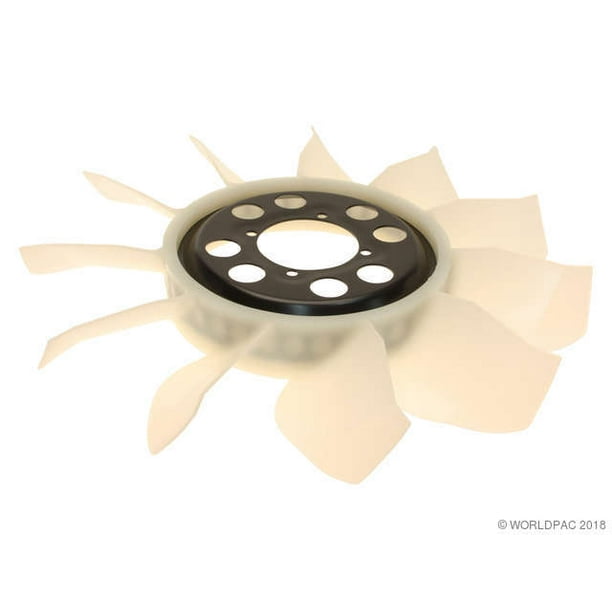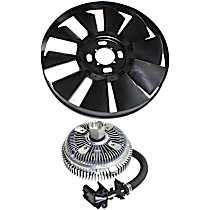The Basic Principles Of Fan Blades
Table of ContentsFan Blades Things To Know Before You Get ThisGetting The Fan Blades To Work8 Easy Facts About Fan Blades DescribedRumored Buzz on Fan Blades

As engine temperature boosts, try to find a sudden jump in fan speed. Some electronic screening and understanding of a scan tool might be required to diagnose electronic fan clutches and the sensors used to identify fan engagement. The internal combustion engine creates a lot of heat, which the engine cooling system is charged with moderating. fan blades.
On the other hand, too much heat can be a huge issue, melting non-metal engine parts and rendering lubricating oil worthless. An overheating engine might literally bond itself into scrap metal. If your fan clutch has gone bad, change it as soon as possible to prevent engine damage. While you're at it, think about the efficiency and fuel economy advantages of updating to electric cooling fans.
The state of California needs that this warning be posted for people buying products that reside in California. CAUTION: Products might include one or more chemicals understood in the State of California to trigger cancer and/or birth defects or other reproductive damage (fan blades). To find out more, check out www. P65Warnings.ca. gov Fan to clutch: 17 ft pounds Clutch to water pump: 41 feet lbs Engine fan clutch on mobile home 8.
You're crawling along in traffic and, in spite of the fact that your pickup bed is empty, the coolant temp is annoyingly high. Then you realize that the air conditioning system is blowing warm. You shut off the a/c and open the windows just as the traffic breaks and you speed up. The coolant temp drops.
Top Guidelines Of Fan Blades
In the house, you raise the hood, puzzled. The coolant level is right on, no tubes are leaking and the accessory belt is intact. You start the engine, let it idle and make a visual inspection. There's no sign of belt slippage, however the radiator cooling fan hardly appears to be spinning.
If your truck is like a lot of, the cooling fan is mounted to its drive sheave through a clutch. Clutch fans run at different speeds under various conditions to help in reducing drain on the engine and to conserve fuel. When the engine is hot, the clutch fan runs almost as fast as the engine.

The hotter air triggers the thermostatic spring to relax and open the valve. Silicone fluid from the reservoir chamber streams into the primary chamber, engaging the clutch, and the fan spins quicker (though it's still slightly slower than the engine). view it now A damaged or weakened thermostatic spring in the clutch hub can not be changed or repaired Silicone fluid exuding past the bearing seal implies the clutch must be replaced.
To validate the medical diagnosis, start with this simple test: Spin the fan as tough as you can on an engine that has not been begun that day. If the fan rotates more than 5 times, you can bet the clutch is bad. You must feel some resistance and the fan may spin up to 3 times, depending on the ambient temperature level.
The Definitive Guide to Fan Blades
You require to do more tests. A couple of late-model pickups and SUVs, such as Ford diesels and the Chevy Pioneer and others with the 4. 2-liter inline Six, have a digitally managed valve for the fan clutch. In these vehicles, the silicone fluid doesn't drain pipes back overnight, so the fan may barely spin on a cold engine.
If your fan clutch is not operating the method it should, it's most likely due to a fluid leak or a bad thermostatic spring or valve. When a leak takes place, it's at the bearing seal, at the center rear of the click here for info clutch. Run your finger around the joint and if you get a big dollop of black goo, that's silicone fluid that has leaked from the housing.
A light smear of silicone fluid might be typical seepage-- no seal is ideal. Certainly, if a substantial quantity of fluid is missing out on, the clutch won't spin as quickly as it should. When it comes to the other possible culprit, a lot of failing thermostatic springs open the valve too quickly. This early clutch engagement means the fan spins faster than it should, but that does not make the engine or a/c run hot.
Let's state spinning the fan didn't expose a problem, there's no leakage and you believe the spring is fine. You might still have a bad valve. Here's how to discover. You'll need to check the temperature of the air moved by the fan using a probe-type thermometer that reads to at least 220 F, ideally to about 250 F.

The 30-Second Trick For Fan Blades
